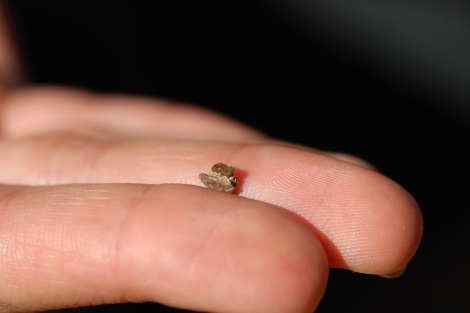
Tooth of a South American rodent milloenes ago 41 years. | Proceedings of Royal Society.
Ucayali River Walk, part of the Amazon basin in Peru, can bring unexpected surprises. It was there where a team of paleontologists found a number of fossils of a rodent that has at least 41 million years old, making the species the oldest in South America and delay in 10 million years the appearance of these mammals on this continent.
The analysis of the teeth used to determine that they were rats and mice, whose sizes have been associated with African rodents, confirming that their origin is in the black continent, according to the researchers in the journal Proceedings of the Royal Society B: Biological Sciences', where they have published the findings.
The team of Darin Croft, a professor at Case Western Reserve University (USA) and authors of the study, says his findings support the hypothesis that rodents arrived in North America and spread southward.
Specifically, the fossils belong to the suborder 'Caviomorpha', a group that includes current species, including guinea pigs, chinchillas, and New World porcupines. So far, the oldest known fossils were 32 million years ago (found in central Chile) and 30 million (in Argentina).
Their study reveals that the expansion joint was not north, as was thought two decades ago and also makes it back in time their arrival to America.
Olivier was Pedro Antonio, a paleontologist at the University of Montpellier (France), who asked Croft to join the team of scientists who roamed the region since 2008 for fossils, following the description of the area that a Harvard professor, Bernhard Kummel, made in 1948. Kummel and then mentioned that he had fossils in the Ucayali basin, but no one had investigated.
In three trips between 2008 and 2010, the group of fossils found Antoine when the water level was lower. A geological study showed that there were layers of rock, including that contained the fossils that had been pushed upward by internal motions, forming an arch, so that previously were detected horizontal now almost vertical. So, instead of digging for the past, scientists found the fossil sediment navigating the river. Downstream, it was a trip to ancient times.
Via:elmundo
No hay comentarios:
Publicar un comentario